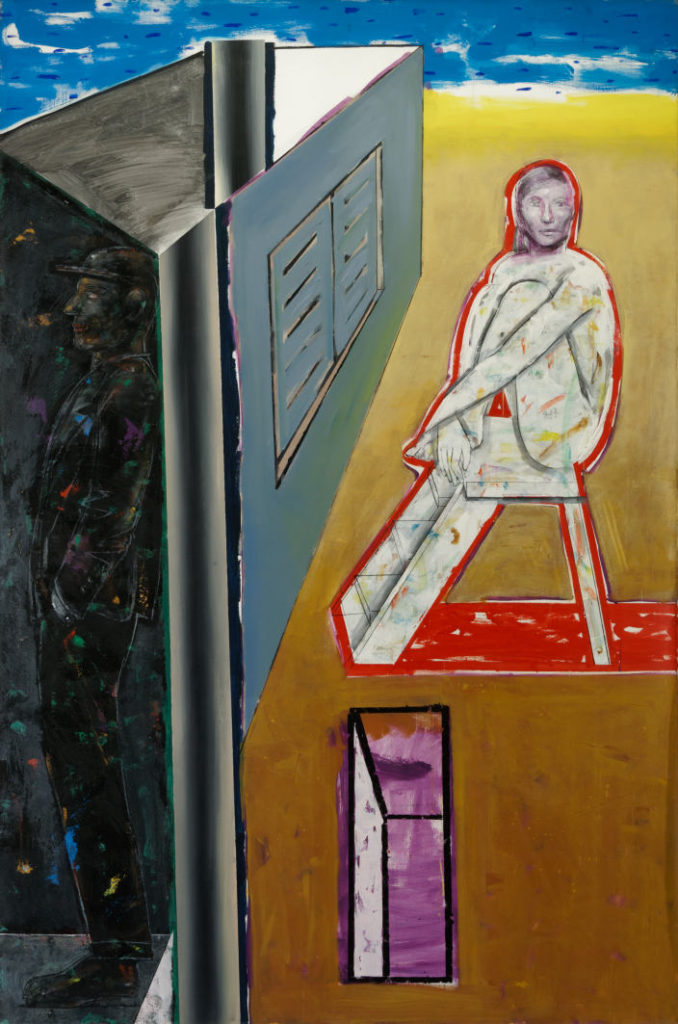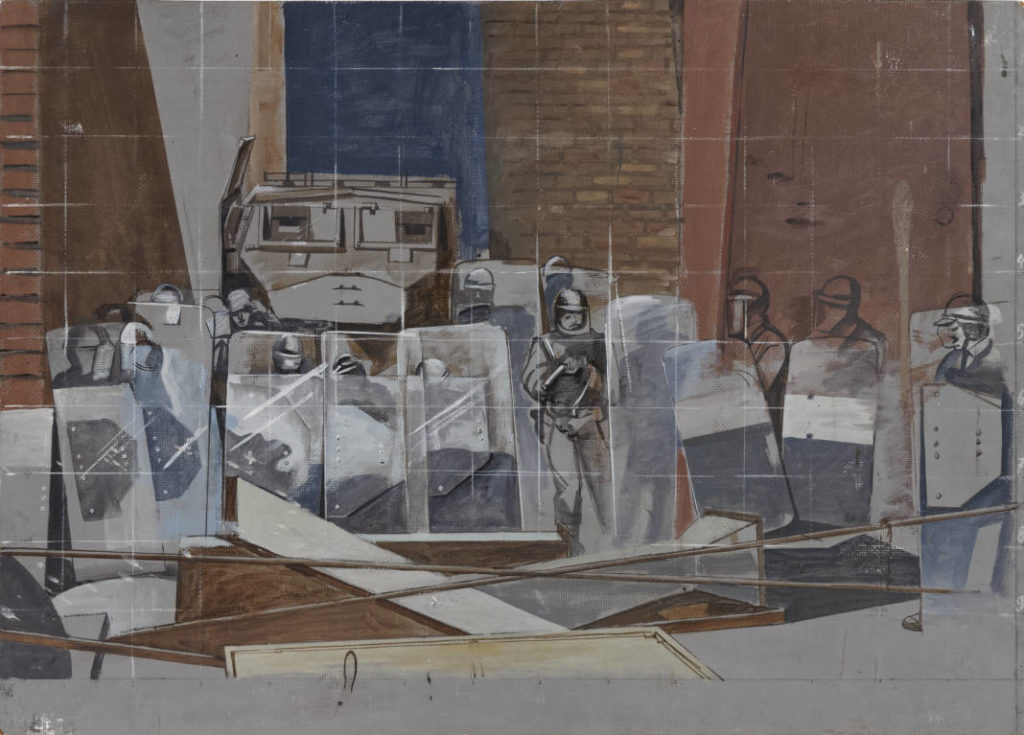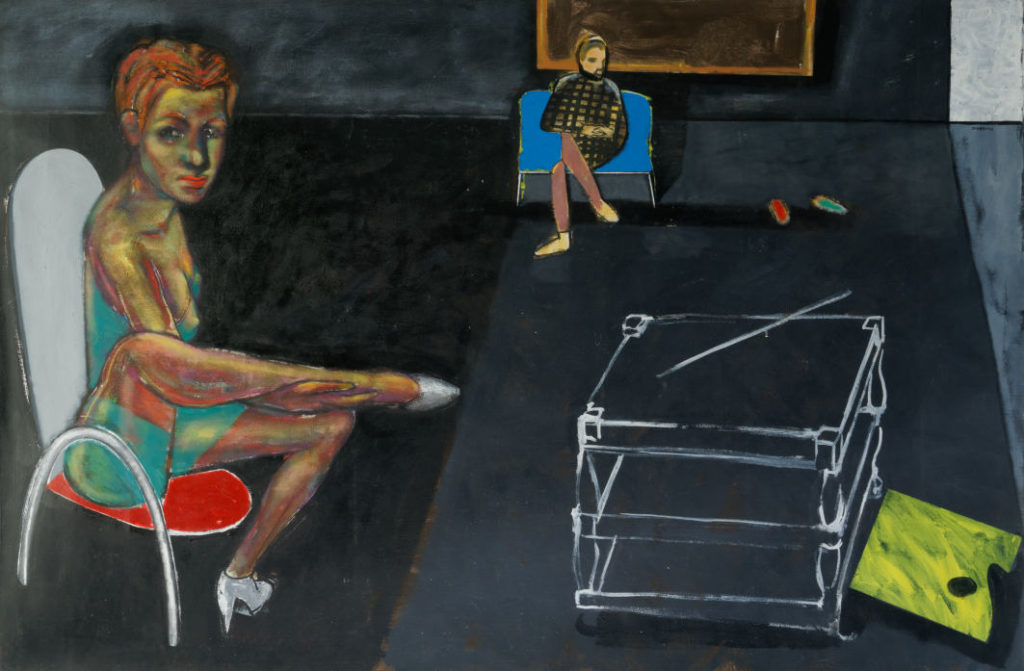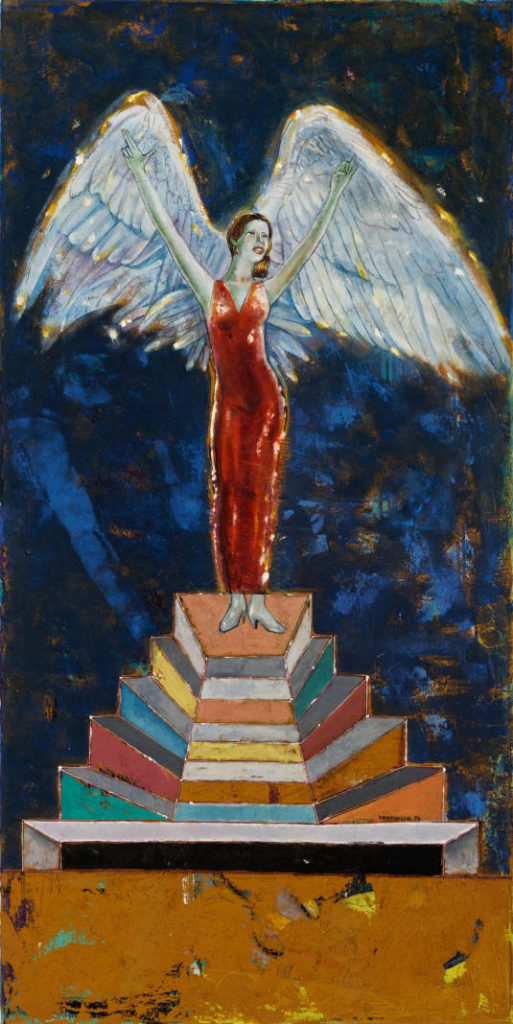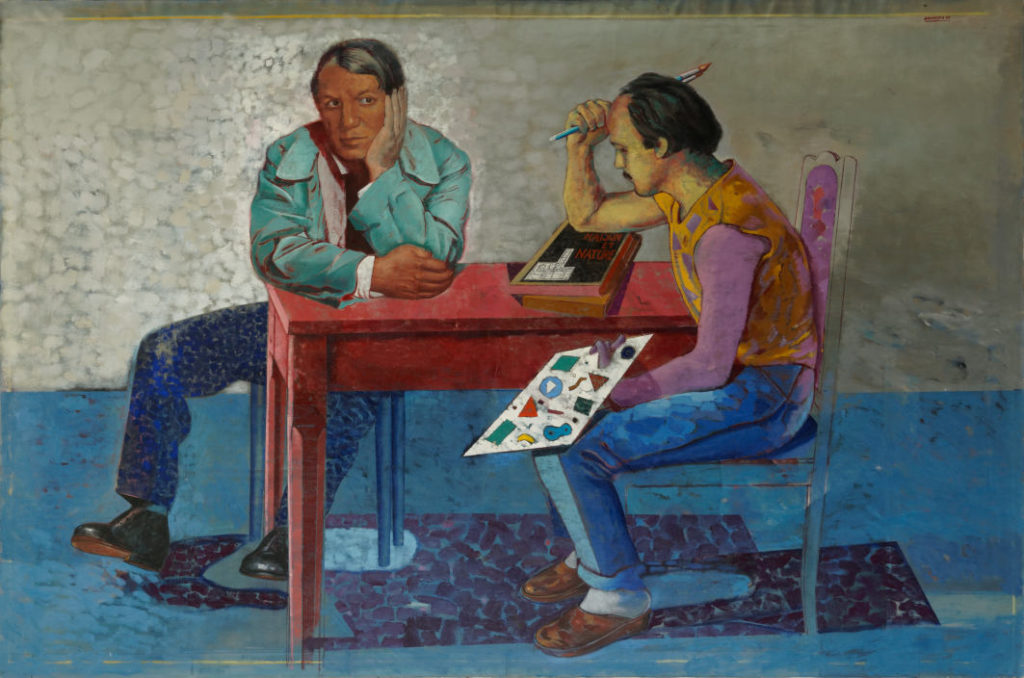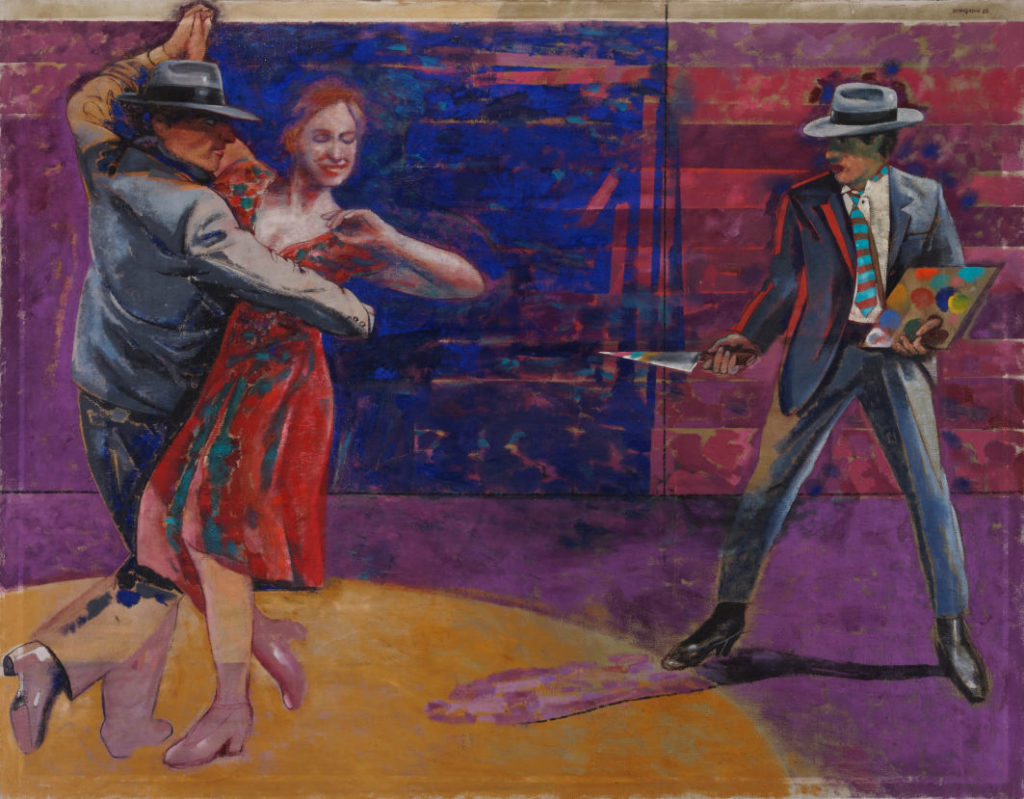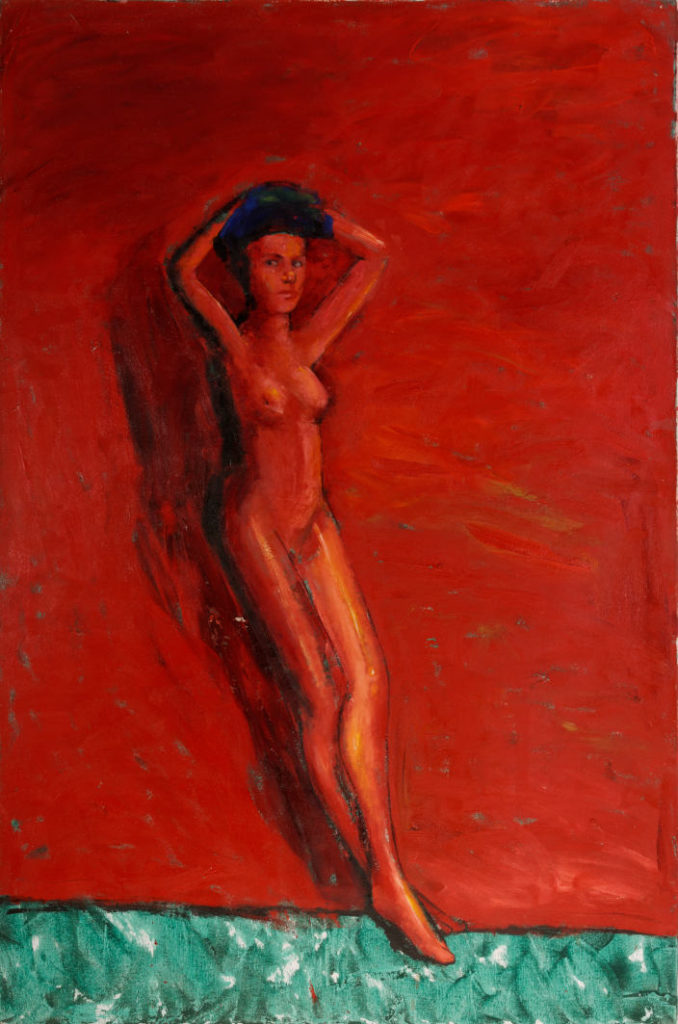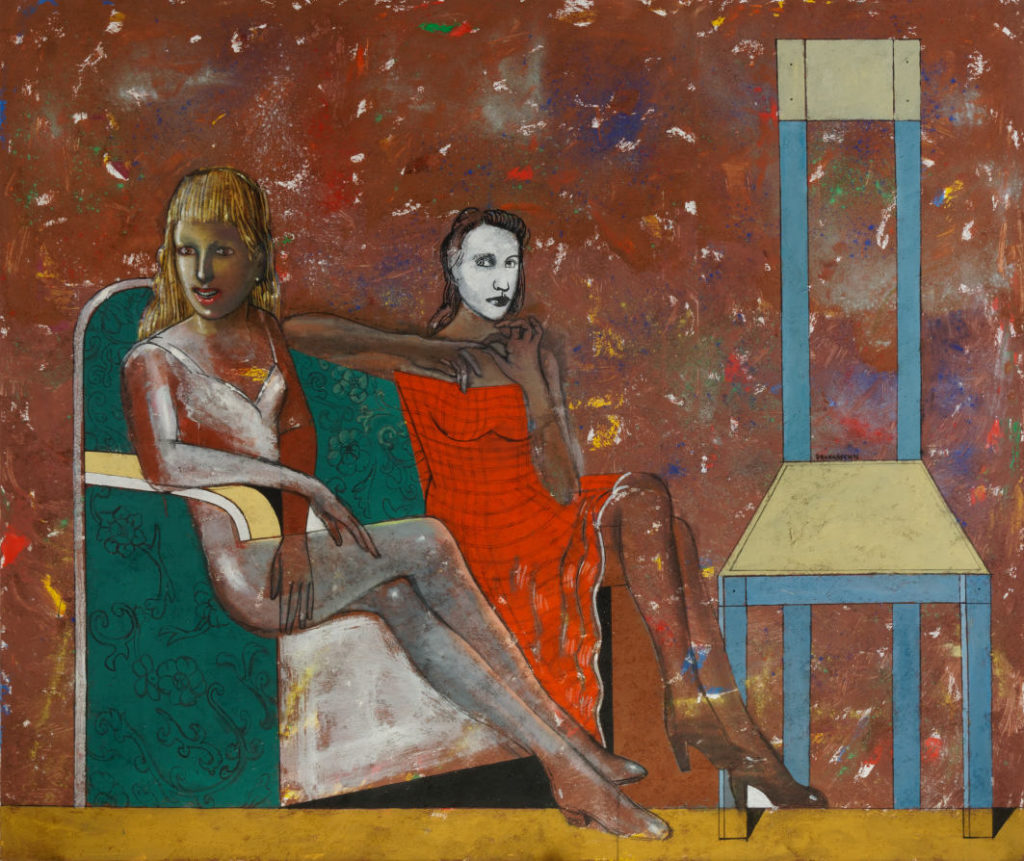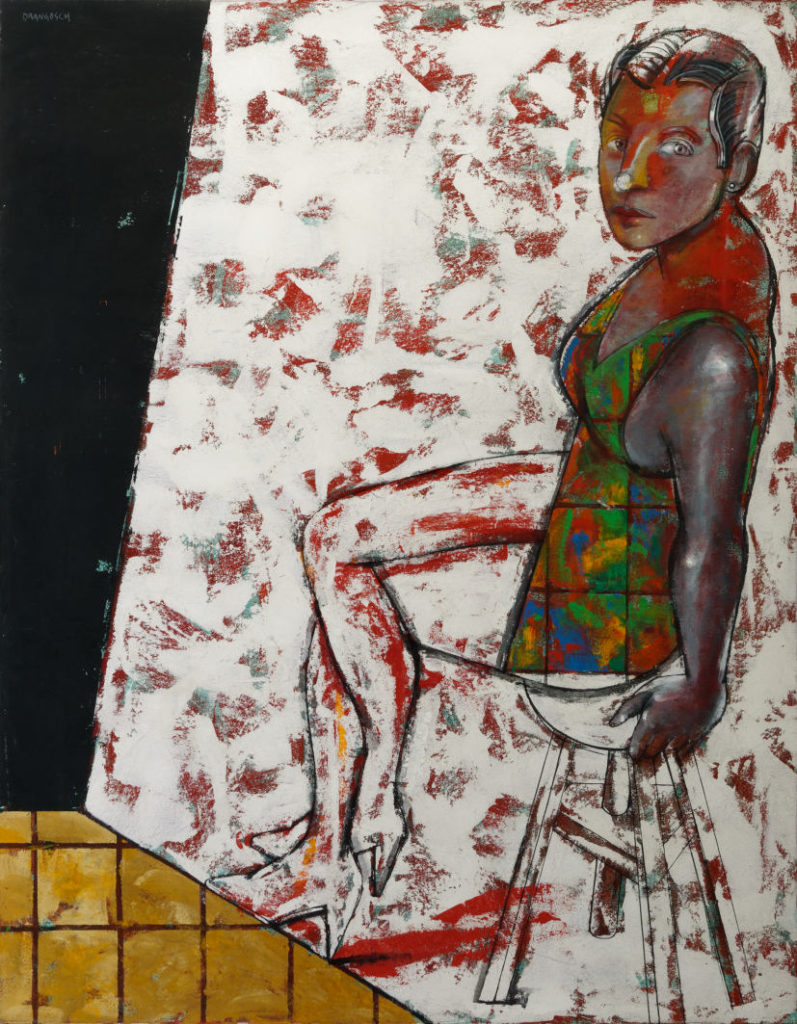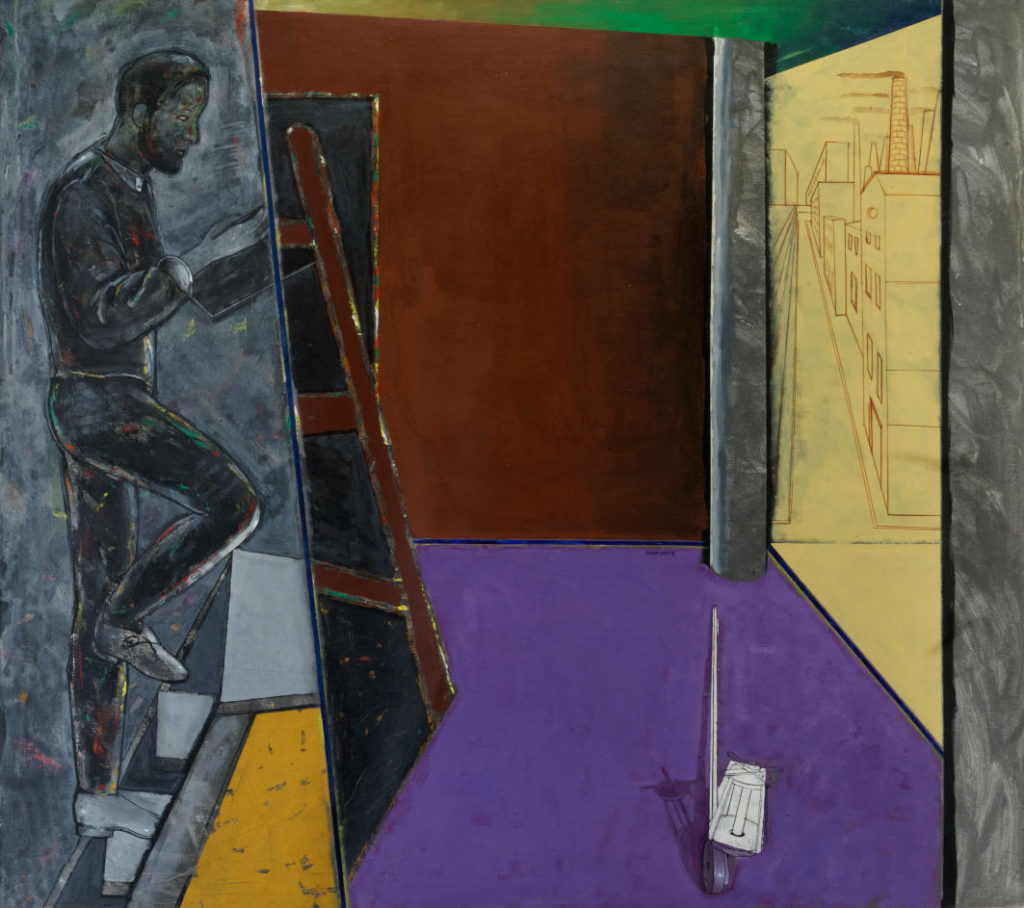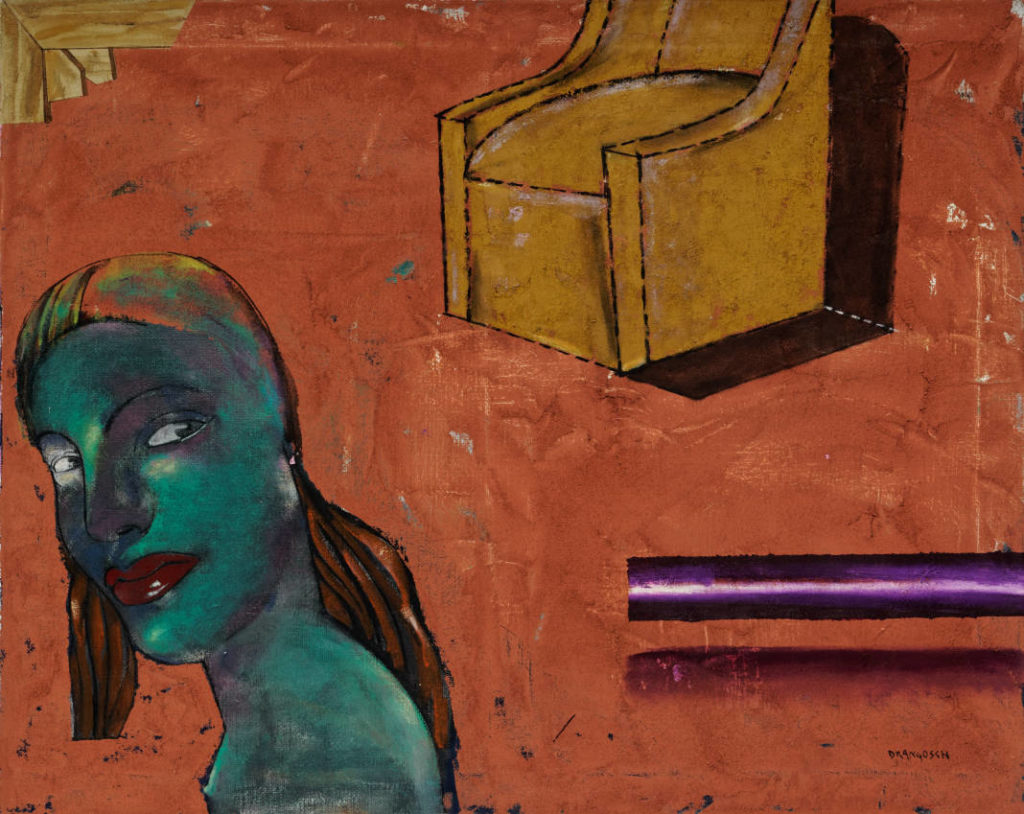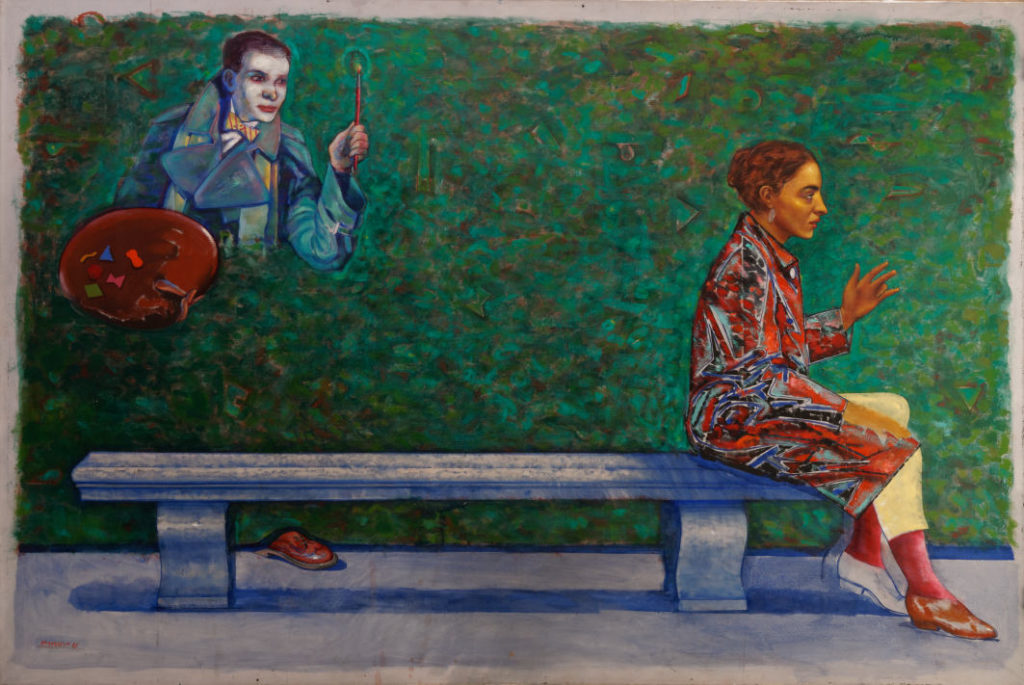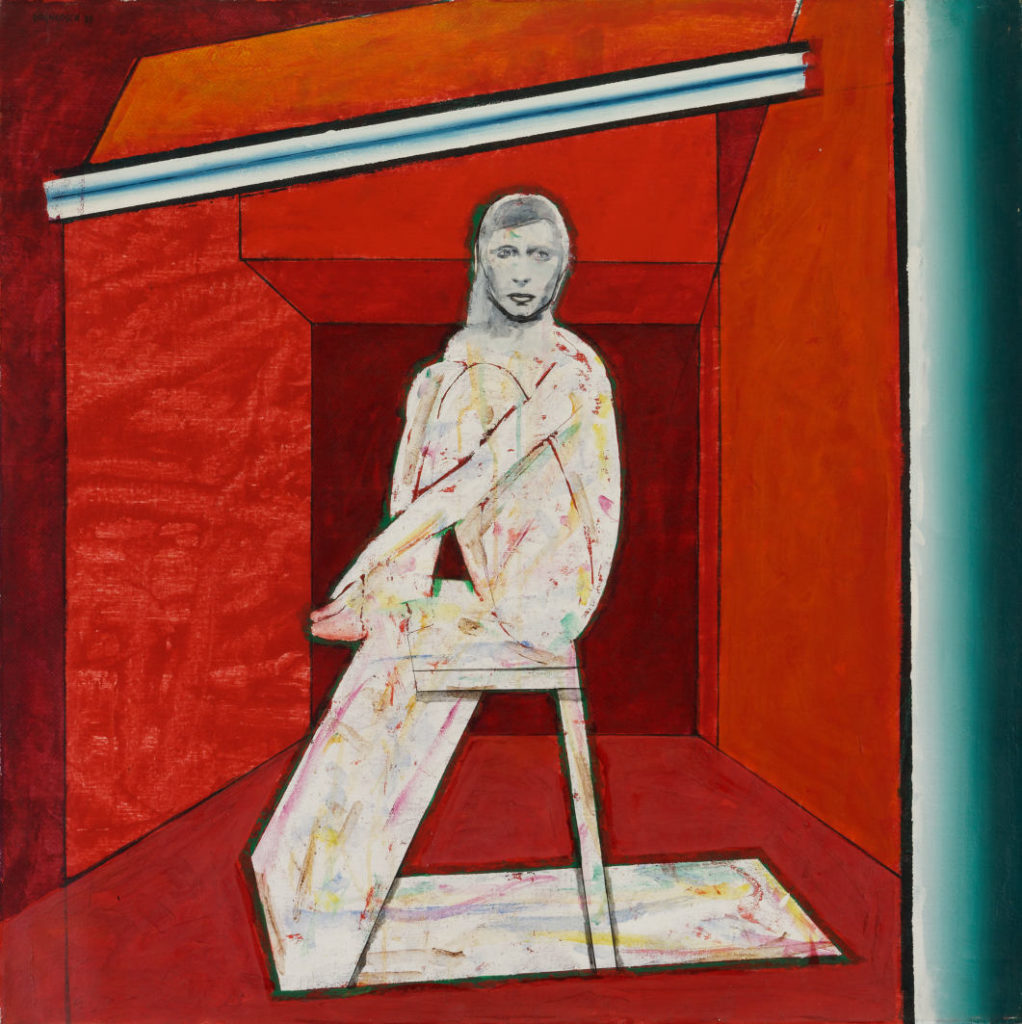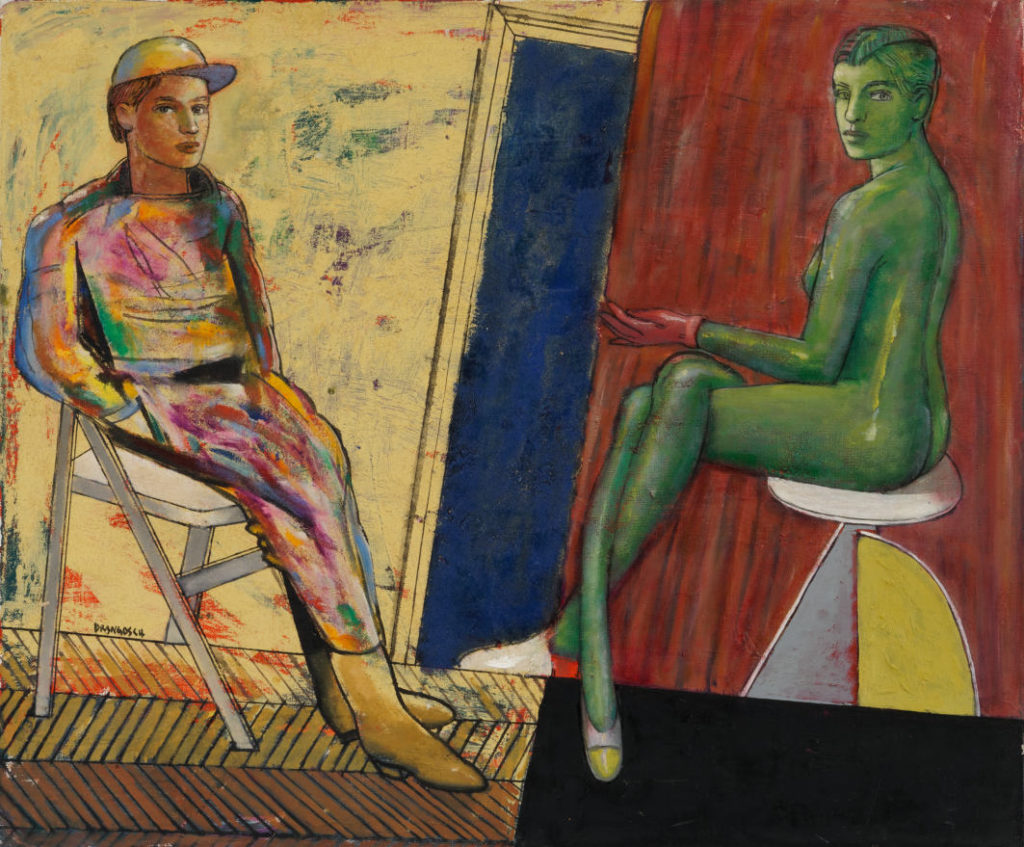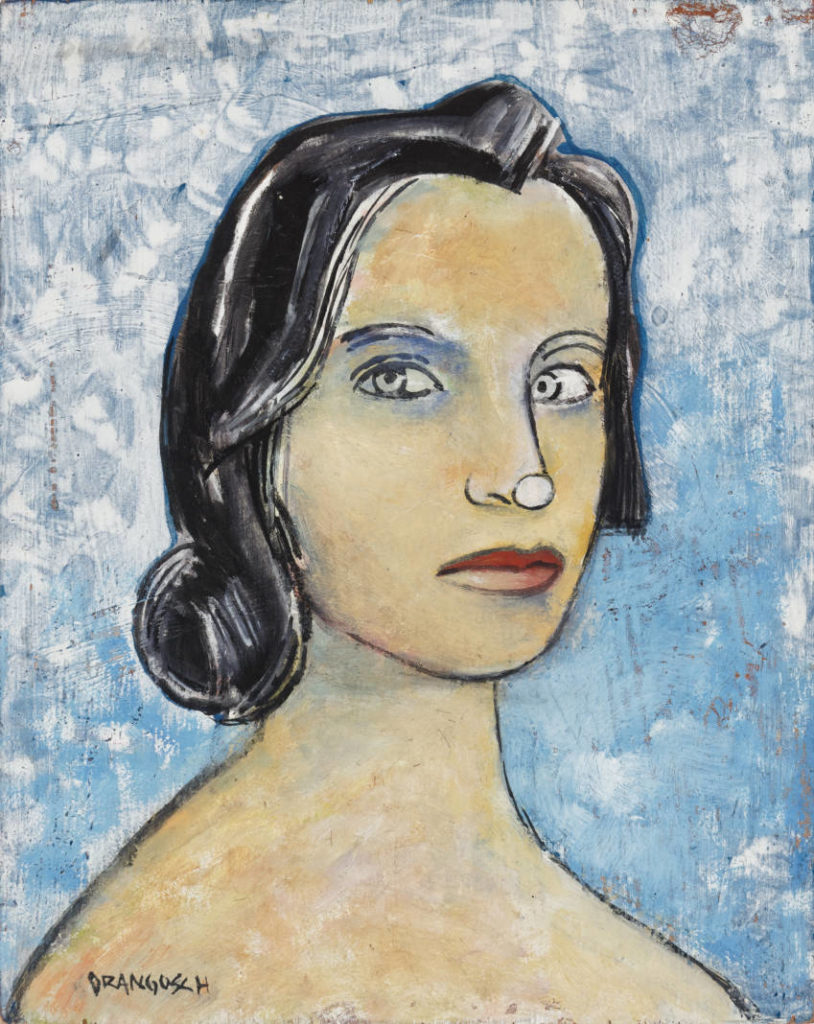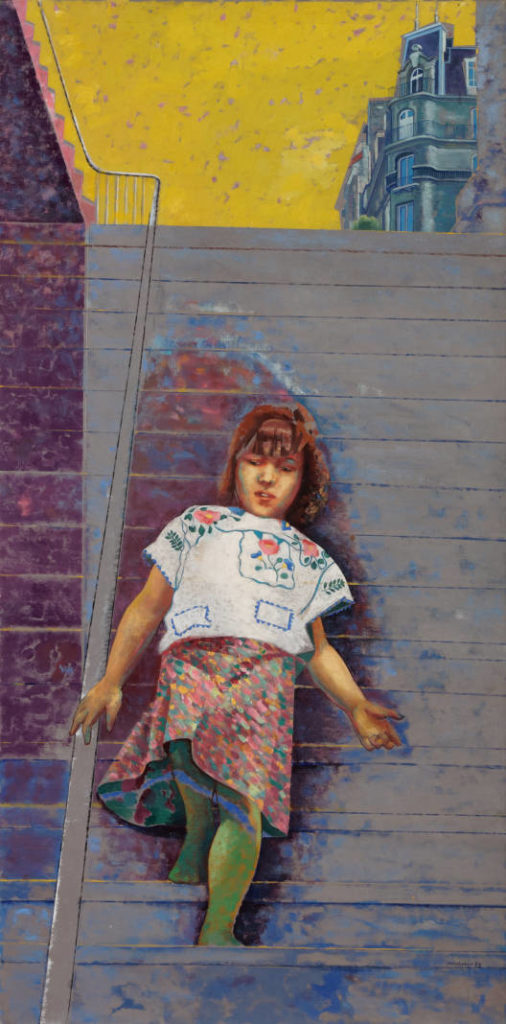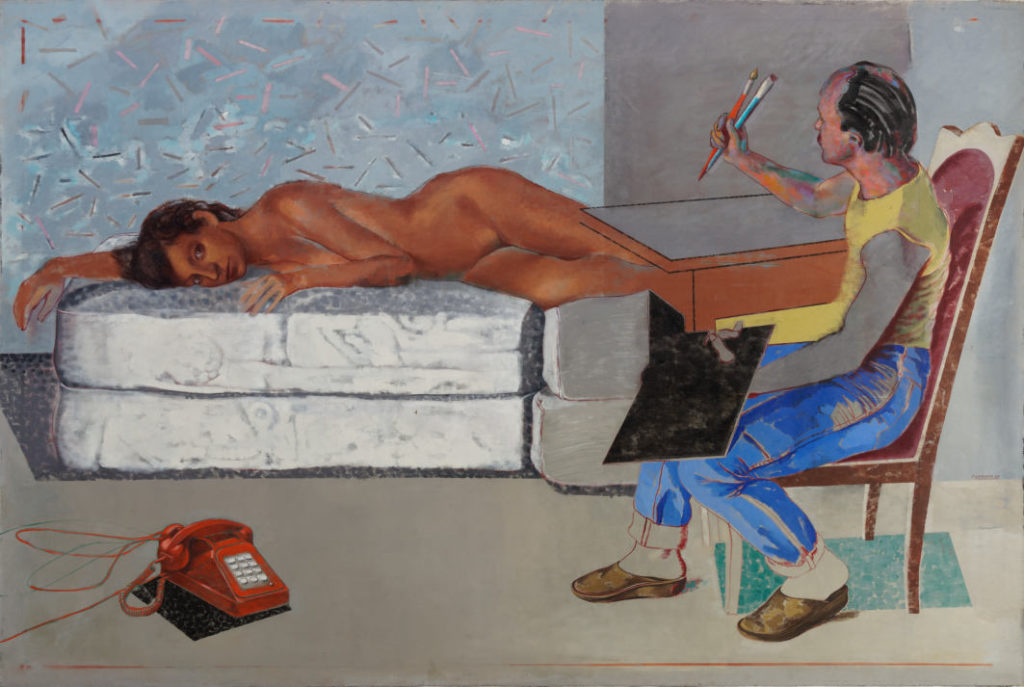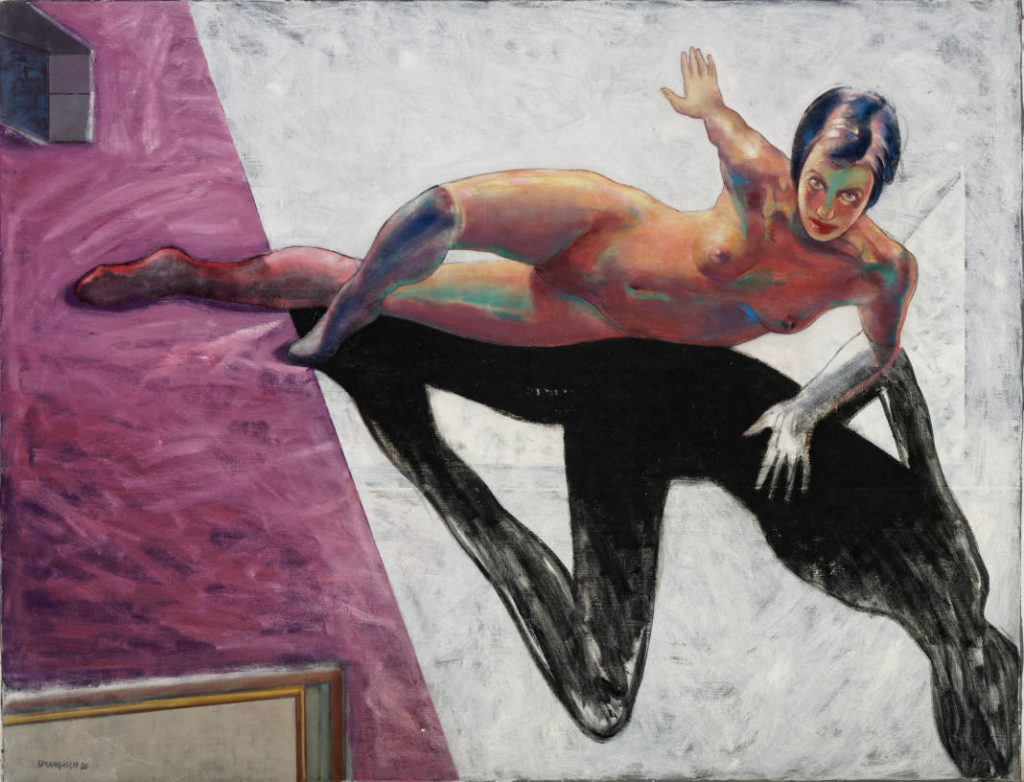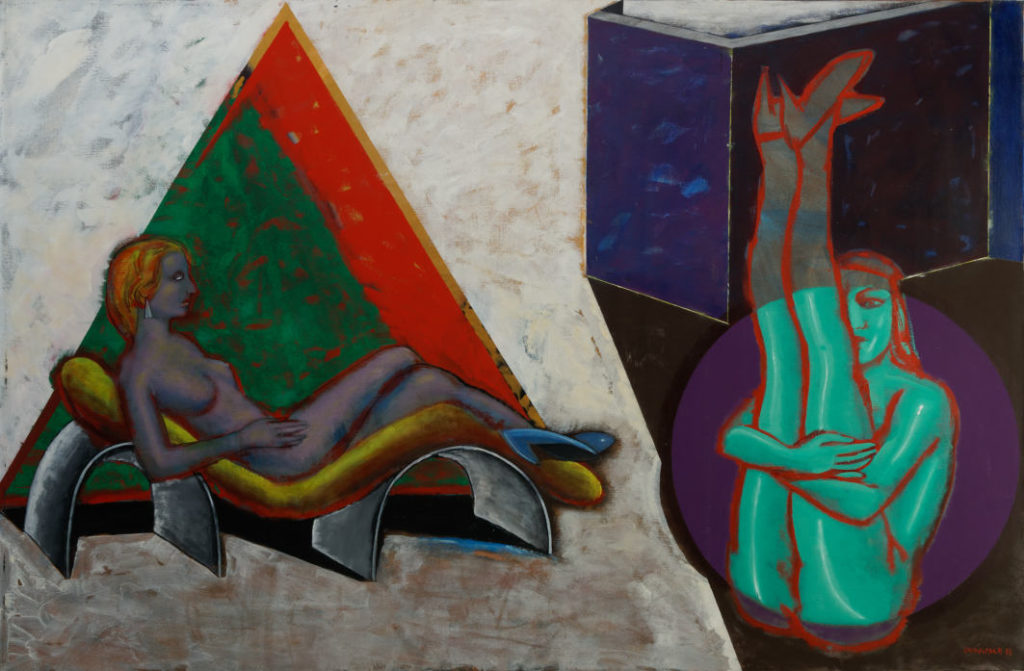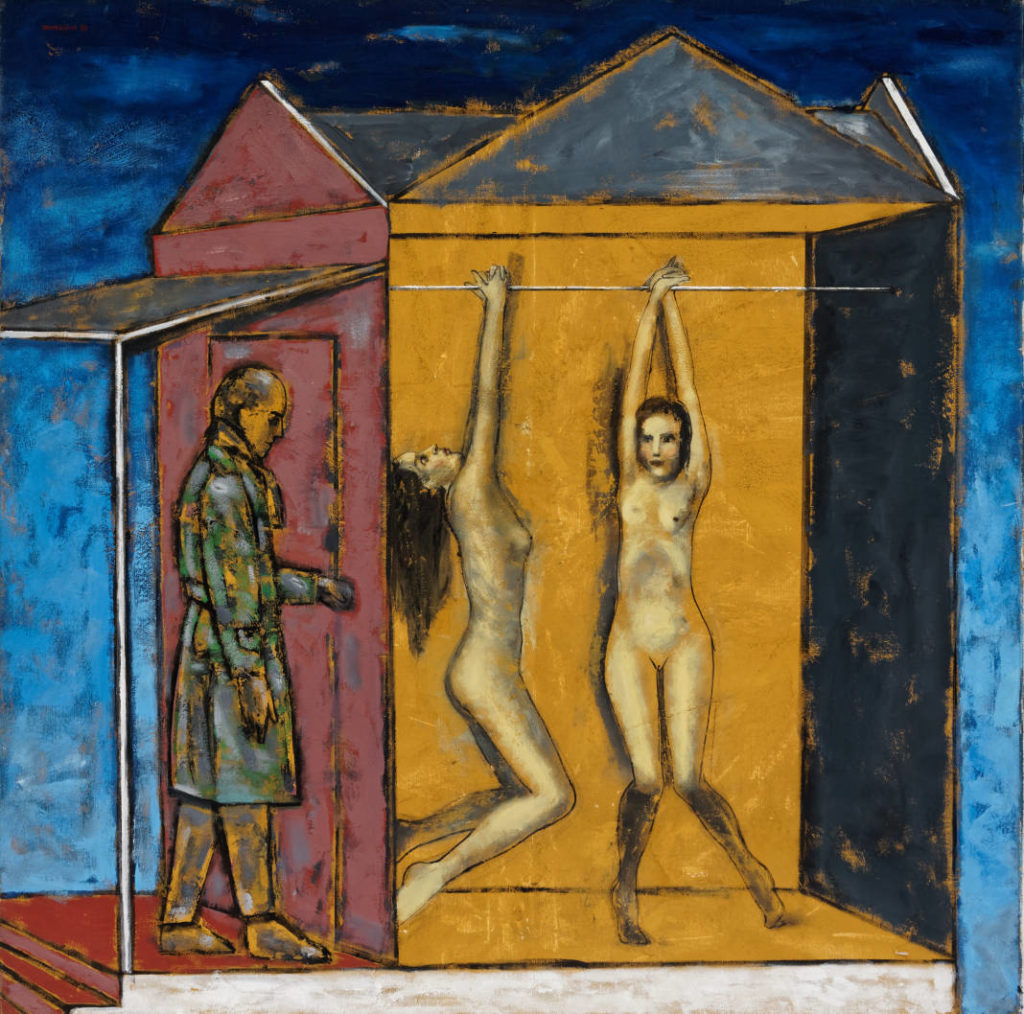After a brief hyper-realistic phase, Ernesto Drangosch turns at the end of the 80s to new paths that lead him to a new figuration, a rereading of Narrative Figuration (Figurative art – Wikipedia) that had emerged in Paris at the end of the 1960s and to which he manages to give a strong personal imprint. From this moment he creates his own reality, a subjective reality and a new reading of art in which figurative and abstract elements are observed.
“I am not an artist concerned with the distinction between reality and non-reality. Every painted image is a reality in itself, but I would like that in that image everything could be represented from the formal to the figurative. It is not reality that interests me but the image” (Ernesto Drangosch – 1995).
Ernesto Drangosch invites the viewer to meet this new world that arises from his paintings from the last decade.
“In Paris, Ernesto Drangosch opens up his fantasy more, and invents another world, which, as always, is the one that surrounds him; Dreams and inventions painted with the same passion, more free, perhaps, more personal too; objects and figures are linear, geometric at times, creating an orderly, contained space, full of emotion and beauty “(Enrique Gomez – Gallery “U” owner).
“We discover spaces with bright, minimalist colors, sometimes done with some perspective. As a true director, Ernesto Drangosch has in these spaces (…) a restricted selection of incongruous objects. An obsessive recurrence of some of them is quickly observed: the staircase, the footstool, the truncated tiered pyramid, the stool, the folding chair, the grand piano (…) as well as the cult objects of painters, the palette or the easel. There are also people – without purpose – who by their very presence have a dialogue with unusual objects. These people are the scheme of the painter and his model, the pianist with tailcoat and top hat, the dancer in a music hall show, the «naked maya» or scantily dressed (…) which, it has evidently incited certain critics to speak of the painter’s ‘timid fetishism’ ”(Jessica Boissel – Curator of the Museum of Modern Art – Georges Pompidou – Paris – 1998).
